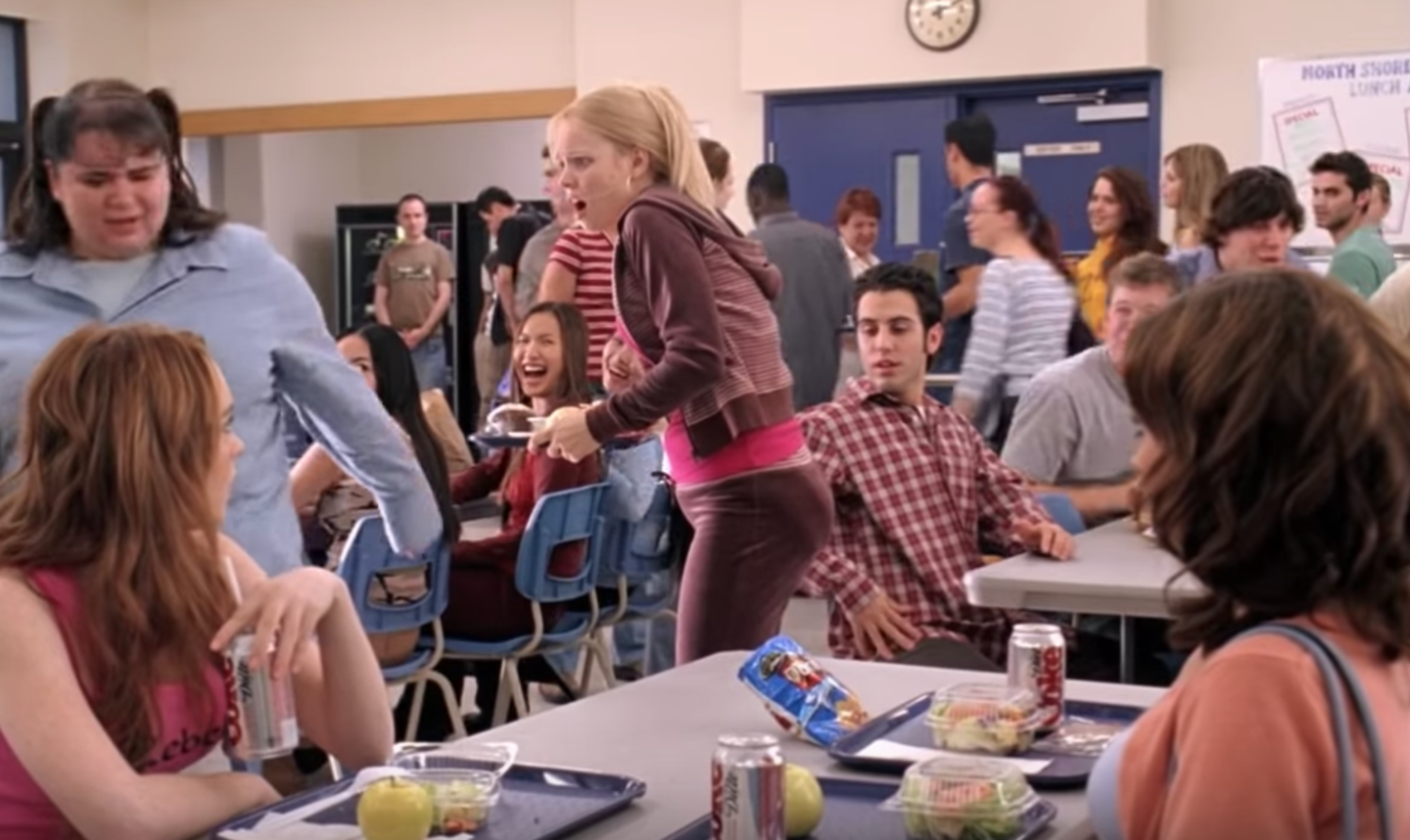Back in 2004, when Mean Girls served as ostensibly the last truly iconic high school movie at the same level as Heathers or Clueless, our nation was still very much in full-tilt Paris Hilton mode. That is to say, the culture revered the skinny blonde girl aesthetic (bonus points for an orange spray tan, to boot) more than anything. The curves and bowling ball buns of the Kardashian clan were not even the seed of a thought in anyone’s brain (even Kim’s, who was still striving for Paris-level thinness back then in her role as Paris’ glorified maid while “organizing her closet”). Even Proud Black Woman™ Beyoncé felt the pressure to cut a slim figure at the time, leaving J. Lo to take the crown for Most Pronounced Posterior–and indeed, it is she who should get the credit for blazing the trail on this phenomenon in the mainstream rather than Kim K.
Cut to the present when even someone like Madonna, once staunchly against embracing any trends that weren’t under the radar to begin with, has noticeably injected her derrière with implants to fulfill the present standard of beauty. Perhaps it was the influence of her ever-blossoming “friendship” with Kim Kardashian, cemented when the two appeared together for a beauty conference (labeled with the hashtag #MDNAMeetsKKWBeauty) to discuss their respective skin care products in 2018. It was also in 2018 that original stick figure shaping early 00s pop culture Paris Hilton herself chose to dress up in the guise of Kim, replete with noticeable backside padding (the more believable kind that Regina George should have been outfitted with), all in the name of starring in the campaign for Yeezy Season 6.
That such high-profile white women once famously known for cultivating sleek, non-curvaceous figures would go to such lengths to showcase gluteal augmentation (as the cosmetic surgeons call it) makes one wish there had been justice for Regina George in her time and place. Sporting those sweatpants because they were all that fit her thanks to Cady Heron’s diabolical plan to rid her of her “hot body” via Kälteen bars, notorious for bulking up one’s frame. Mercifully for Cady’s evil tactical strategy to strip her nemesis of her popularity, the wrapper is written in Swedish, making Regina the perfect gullible target to believe it’s actually meant for weight loss. Clearly, she never got the memo: Trust no bitch.
Mary Jane Fort, the costume designer on the movie, perhaps didn’t have enough of a reference point at the time for how to give a white girl a convincing badonkadonk. For the brown-hued (an unfortunate color choice), Juicy Couture-wannabe sweatpants appear less to have padding in them and more of an effect that achieves the look of Regina having shat herself. Even so, when a legitimate big girl bumps into Regina as she starts to leave the Plastics’ lunch table in a huff over being called out for wearing sweatpants on a Monday (breaking a cardinal sartorial rule), the girl vindictively seethes, “Watch where you’re going, fat ass!”
As the cafeteria erupts into laughter, Regina looks at her backside in humiliated horror, as though finally processing just how large it has become (even though it is, of course, only “large” for the standards expected of a white girl in Hollywood). Alas, if only this had happened to her in the present (or at least circa 2010), when the objective trend has so vastly shifted in favor of those with a plumper, therefore more rounded posterior. Had that been the case, everyone in the cafeteria would have instead ogled her with awestruck jealousy, and Cady’s stratagem would have failed oh so miserably. As miserably as most white girls without a badonkadonk live in 2020.




















